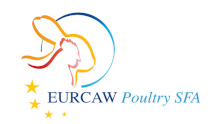Document type: scientific review published in Frontiers in Veterinary Science
Authors: J. L. Saraiva, P. Rachinas-Lopes, P. Arechavala-Lopez
Preview: The effects of stocking density on fish welfare are complex and involve many interacting parameters. This complex relationship between fish welfare, stocking density and influencing factors make it challenging to define a specific optimal ("golden") stocking density. Indeed, previously published recommendations on stocking density for different species of aquaculture interest are incredibly variable even at the same life stage, and can also vary widely within a rearing unit. Production density can be estimated quite accurately if the farmer has good biomass control and a known water volume, but it is difficult to set minimum and maximum stocking density levels that will protect welfare. However, there is little doubt that stocking densities that are too low or too high can have negative impacts on welfare and/or production. Here, we propose how to select density on captive fish and monitor its potential effects integrating 1) solid welfare assessment based on operational welfare indicators and 2) good management practices. Regulation directly limiting stocking density is likely to be unworkable and ineffective, and a more rational option might be to prescribe acceptable levels of different welfare indicators (e.g., water quality, health, nutritional condition and behavioral indicators), which together with a positive economic balance of the company, allow to estimate the most suitable range of fish density for each particular species, life-stage and production systems.




